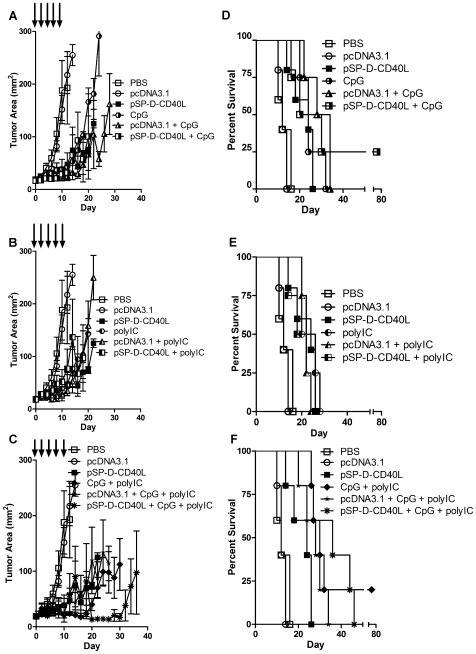Figure 3. Combinations of pSP-D-CD40L, CpG, and poly(I:C) showed strong antitumor effects on established B16F10 melanoma.
Given the promising data of Fig. 2, further studies were done to determine the relative contributions of pSP-D-CD40L, CpG, and poly(I:C) and the effects of using them in a triple combination. Twelve groups of mice (5/group) were studied in parallel. For display purposes, the data are grouped into three rows of graphs focusing on CpG (top row), poly(I:C) (middle row), and CpG + poly(I:C) (bottom row). Panels A, B, and C – While each individual agent slowed tumor growth, the most significant antitumor effect was produced by the combination of pSP-D-CD40L + CpG + poly(I:C). Panel A shows that CpG alone significantly slowed tumor growth compared to either PBS or pcDNA3.1 alone from day 12 (p<0.01 by Student's t test, mean±SEM, n = 5). In this fully controlled experiment, however, it was clear that the addition of pSP-D-CD40L to CpG produced no further antitumor effects (p>0.05). Similarly, Panel B shows that poly(I:C) alone significantly slowed tumor growth when compared to PBS or pcDNA3.1 alone from day 12 (p<0.01). Again, however, the combination of pSP-D-CD40L + poly(I:C) produced no further antitumor effects (p>0.05). Interestingly, as shown in Panel C, the double combination of CpG + poly(I:C) significantly reduced tumor growth beyond that produced by CpG alone (p<0.05 on day 24 on the combination as compared to CpG alone). The addition of pSP-D-CD40L to the two TLR agonists, CpG and poly(I:C), produced an even stronger antitumor effect (Panel C, p<0.05 on day 24 comparing the triple combination to CpG + poly(I:C)). Panels D, E, and F – For survival, the addition of pSP-D-CD40L did not increase the antitumor effects seen with CpG alone. All three agents (pSP-D-CD40L, CpG, and poly(I:C)) improved survival as single therapies. From pairwise comparisons, the survival benefit was greatest with CpG and less prominent with pSP-D-CD40L and poly(I:C). The combination of CpG + poly(I:C) improved survival further compared to poly(I:C) alone (p<0.05 by log-rank test). Although the effects on tumor growth indicated that the double combination of TLR agonists CpG + poly(I:C) was better than each alone, this was not reflected in the survival data. Similarly, the superiority of the triple combination of pSP-D-CD40L + CpG + poly(I:C) seen in the tumor growth studies was not statistically significant from the survival data.

